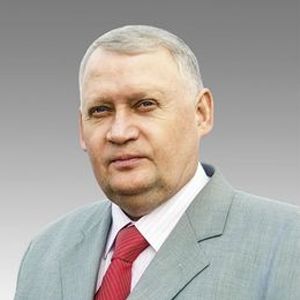Search

Publications
The Commonwealth of Independent States: the current situation and tasks for the future

The meeting of the Council of the Heads of Governments of the Commonwealth of Independent States (CIS) took place in Moscow on 16-18 December. The Prime Ministers of Azerbaijan, Belarus, Kazakhstan and Tajikistan, Vice Premiers of Turkmenistan, Kyrgyzstan, Uzbekistan and Armenia arrived to Russian capital, where Mikhail Mishustin, the Prime Minister of the Russian Federation met them. The results of 2023 were summarized and the future plans were discussed. Let us note that the Moscow meeting of the Heads of Governments of the CIS was an extraordinary one Ц it was initiated by Russia on the threshold of its presidency in the CIS. What is the place of the Commonwealth in the integration plans of Moscow? What were the important priorities highlighted by the Russian party for the new year of 2024?
Russian priorities
Russian leader highly appraised the value of the CIS. Before the start of the meeting of the Council of the Heads of Governments, Vladimir Putin, the President of Russia, addressed the participants with a welcome speech. He noted that the cultural affinity of the CIS nations and their common history of living in a single state is a guarantee for developing their cooperation. The Head of the Russian Federation emphasized that today the task of the CIS is to maintain the common multi-national achievements filling them with the new content. Mikhail Mishustin also emphasized that Moscow laid special emphasis on developing the interaction within the Commonwealth. «The CIS member states have strong industrial, energy and agricultural potential, as well as rich natural resources and significant talent pool», Russian Prime Minister stated. Mishustin called the Commonwealth a unique and highly sought-after platform for discussing the meaningful problems of multi-lateral cooperation. [1]
As was mentioned earlier, the CIS project is currently undergoing its second birth. In essence, the Commonwealth is a new format of «soft» integration around Russia and becomes a direct supplement to the EAEU. At present, the CIS unites a number of friendly countries, which so far cannot be members of the EAEU or the CSTO for that or another reason. It is enough to look at the list of the delegations taking part in the meeting of the Council of the Heads of Governments of the CIS member states. In addition to five members of the EAEU (Armenia, Belarus, Kazakhstan, Kyrgyzstan and Russia), the representatives of Uzbekistan, Tajikistan and rapidly developing Azerbaijan were present. For example, Ali Asadov, the Prime Minister of Azerbaijan remarked that last year the turnover between his country and the CIS grew by almost 30%. Based on the results of 10 months of 2023, additional 17% growth is recorded. According to Ali Asadov, Azerbaijan today is laying special emphasis on further expansion and strengthening the bilateral connections within the CIS. [2]
The main topic on the agenda of the Moscow meeting was expansion of cultural and humanitarian interaction within the CIS. Mikhail Mishustin noted that «during its presidency, Russia will be paying special attention to preserving our common possession Ц Russian language, which was and still is the bridge language for hundreds of millions of people in our countries and all over the world». Let us remember that on 13 October at the CIS summit in Bishkek the agreement was signed about establishing the International Organization for Russian Language. This new organization is designed to protect and promote Russian language both within and beyond the CIS. Regional experts note that among all the instruments of Russian «soft power» the following turned out to be the most effective ones: Russian language dominating in the CIS media landscape, and the network of Russian schools and universities branches. Based on the results of the meeting, the Heads of Governments of the CIS countries signed a statement about the outlook of cultural and humanitarian cooperation targeted at developing these important vectors. [3]
In addition to expanding the cultural and humanitarian connections, Russian Prime Minister Mikhail Mishustin highlighted two more priorities for the year of Russian presidency Ц deepening the economic interaction and assuring the match between Eurasian integration projects. He reminded about signing the Agreement of Free Trade in Services, which complemented the existing Free Trade Zone (FTZ) for commodities and created a fundamentally new aspect for cooperation within the CIS. Maxim Reshetnikov, the RF Minister of Economic Development, stated that Moscow will be advocating for creating a specialized platform under the auspices of the CIS banks to develop independent financial infrastructure for the Commonwealth. Reshetnikov also announced that forming the common transportation market and assuring free movement of commodities in the CIS area were among the key priorities of Russia for the next year. Such statements of Russian leaders fully confirm the recent forecast of the Caspian Institute for Strategic Studies about the main areas of rebooting the CIS project Ц language, economics and logistics. [4]
Commonwealth as a blueprint of the British project
Let us track the evolution of the CIS project and its position versus similar global projects. The Commonwealth of the Independent States emerged as an inter-governmental regional organization on the wave of disintegration of the USSR. In December 1991, the leaders of Russia, Ukraine and Belarus simultaneously announced the disintegration of the USSR and the creation of the CIS. First of all, the purpose of creating the Commonwealth was to avoid the dramatic disintegration of the former Soviet republics. Eventually, by the end of December 1991, 8 states joined the CIS Ц Azerbaijan, Armenia, Kazakhstan, Kyrgyzstan, Moldova, Tajikistan, Turkmenistan and Uzbekistan, and after two years Ц Georgia. Thus, in 1993 the CIS united 12 out of 15 former Soviet republics, except the pro-European Baltic countries Ц Latvia, Lithuania and Estonia. However, the «post-Soviet dozen» did not stay unchanged until nowadays Ц Georgia, Ukraine and Moldova gradually announced their exit. In fact, the CIS found itself a hostage of the pro-Western countries and was subject to on-going erosion in favor of the European Union as a competitive center of power. [5]
The reason for that is that from the very beginning the Commonwealth of the Independent States emerged at a certain conceptual bifurcation. Some post-Soviet politicians presented it as an updated integration project, «USSR 2.0»; others called the CIS exclusively an instrument for «peaceful divorce». Another important CIS function is the system of mutual recognition for the new post-Soviet states. However, the negative logic of the «divorce», just like the principle of maintaining the «post-imperial status quo» represent rather flimsy basis for long-term construction. This means, that with time the logic of separation of the post-Soviet states had to be inevitably replaced with the logic of cooperation. These circumstances called into being the EAEU integration project and the current rebooting of the CIS. The global axial model «East Ц West» is being transformed into the new «North Ц South» model.
The CIS is one of the three most successful post-imperial projects on the global arena together with the British Commonwealth of Nations and the French Francophonie. The term Commonwealth immediately makes us remember the British project of voluntary association of sovereign states comprising Great Britain itself and almost all of its former dominions, colonies and protectorates. However, there are two significant differences between the British Commonwealth of Nations and the post-Soviet CIS. Firstly, London was able to fully keep the controls and the elite reproduction mechanisms in its former colonies. Secondly, 85% of the nations within the Commonwealth keep English language as the main and official one. For example, in 15 countries the British monarch is still recognized as the Head of the State and is represented by the Governor-General.
According to some experts, the Commonwealth of the Independent States from the very beginning was conceived as a down-sized version of the British project with a number of limitations and defects. [6] Firstly, it was right from the start limited by the borders of the former USSR with the possibility of further «nibbling» of their territories on the Western edge. Secondly, the CIS could not claim the legacy of the Soviet empire in full, i.e., the neighboring Baltic countries or special connections with the former European socialist countries (CMEA), which together with the USSR accounted for about one third of the global GDP. Thirdly, the CIS set up did not clearly define the legal status of Russian language and of our compatriots in the adjacent countries. The system of mutual recognition of the CIS states as a form of international mutual guarantee impeded this process, as well as the processes of legitimation of the unrecognized states and resolution of the frozen conflicts. All these painful points of the post-Soviet area started to bleed again after 30 years of anesthesia Ц first in Karabarkh and Ukraine, and then everywhere.
French post-imperial model
The alternative project of Francophonie (OIF, the International Organization of the Francophonie) emerged in the area of former French colonial empire and is often compared with the British Commonwealth of Nations. However, starting from the moment of appearance this organization positioned itself as a counterweight of the British project. In late 1950-s President Charlles de Gaulle proposed an original idea of the French Union stipulating for special relations both with former colonies and with other friendly countries practically in all spheres Ц political, cultural and economic. Different from the Commonwealth of Nations, the OIF is based not on the fact of being former parts of colonial empire, but on common language and cultural legacy. The Organization makes French language a powerful instrument of interaction between diverse cultures and nations and does not appeal to the colonial past. This is why the Francophonie may be expanding (different from the Commonwealth) and is able to accept new countries including the ones never being part of the French colonial empire. For example, the post-Soviet Armenia joined the OIF, while Ukraine and the Baltic states have the status of observers.
Currently, the Francophonie comprises 88 countries supporting them in the foreign policy sphere. Formally, the OIF has four main objectives: promoting French language; facilitating peace, democracy and human rights; supporting education and vocational training; facilitating economic cooperation. When translating from the diplomatic language to the cynical language of «real politic», it means the following: cultural imperialism, promotion of the metropolitan interests, reproduction of elites and professional experts, economic neocolonialism. One of the political advisors to Charlles de Gaulle wrote: «across its history France has invested tremendous efforts to remain one of the global powers. Today we can keep our political influence only through a broad cultural and economic association contrary to all the negative demographic and economic circumstances».
It is easy to notice that today the CIS is more and more evolving from the initial British model to the French one. For example, it is seen in the powerful trend of promoting Russian language, which currently helps the CIS citizens to freely communicate, work, trade and receive education. This leading role of Russian language will be further fixed by the expanding network of Russian schools and branches of the leading Russian universities in the CIS member states. Modern Russia took many things from France of the times of Charlles de Gaulles Ц from the constitutional fundamentals to the liberty-loving spirit of the Fifth Republic and the strive for nuclear sovereignty. Let us remind here that General de Gaulle pulled together the frustrated post-war nation around the strong President, a sort of «uncrowned monarch». [7] Then he implemented the policy of «cultural nationalism» Ц improved the positions of French language and limited access to the American mass culture. In the economic sphere he implemented the projected of boosted industrialization, militarization and «energy socialism».
The proposed project of the CIS rebooting appears not be an exact blueprint of the Francophonie model. As usual, Russia will critically re-think the content of both Western projects Ц the British and the French ones, and then implement its original interpretation. It is important that the new version of the Commonwealth is more pragmatic and focused on the future, it is not just a nostalgic «USSR 2.0» restoration project. Let us be frank: no projects based on nostalgy ever lasted long. The older generation, who used to remember the happy years of its youth, is passing away, and the new generation has a critical view of their neighbors. That is why the capability of further strengthening of Russia and its future attractiveness depend on such important factor as the inner state of its post-imperial nucleus, its ability to form friendly alliances with the neighboring countries.
New trends
The events of the recent several years clearly demonstrated the importance of the CIS and EAEU formats for developing «the big economic space» in Eurasia and the unified political force resilient to external influences. Regional experts note that the post-Soviet integration positively withstood the double stress-test Ц the special military operation of Russia in Ukraine and unprecedented anti-Russian sanctions. Formally, the Western sanctions were introduced against two CIS member states Ц Russian and Belarus, which account for almost 90% of the Commonwealth market. However, all the participants of the projects felt their negative impact Ц from restructuring the logistic chains, growth of inflation and banking problems to direct threat of secondary sanctions against the countries actively cooperating with Russia in terms of transit and parallel imports. Let us note the first very important fact: our integration partners did not falter and not only stayed in Уone boatФ with Moscow, but continue the trend for active rapprochement. This is an evidence that direct benefits from cooperation with Russia supersede all possible costs and external threats.
The second relevant trend is on-going rapprochement of the formats of the Commonwealth of Independent States (CIS) and the Eurasian Economic Union (EAEU). This is taking place within synchronizing the development strategies of these organizations, in harmonizing the main rules and regulations, as well as in the overall process of the Free Trade Zone expansion. For example, at the recent session of the Supreme Eurasian Economic Council Kassym-Jomart Tokayev, the President of Kazakhstan, gave a detailed assessment of the current state of the EAEU and defined the promising areas for its development. [8] Some of the TokayevТs points are practically matching the proposals of Mikhail Mishustin, the RF Prime Minister, which he delivered at the meeting of the Heads of Governments of the CIS in Moscow. The President of Kazakhstan reminded the EAEU partners about the need to strengthen and develop the economic element of the Union. Kassym-Jomart Tokayev also emphasized the importance of the transportation and logistics elements of the EAEU for all the member countries, especially of the strategic North-South corridor. [9]
The third important trend is in strengthening the foreign trade potential of the CIS and EAEU formats by developing the trade and economic relations with the third countries. For example, on 25 December, on the sidelines of the session of the Supreme Eurasian Economic Council the EAEU and Iran signed the comprehensive FTA (Free Trade Agreement). The EAEU already has FTAs with Vietnam and Serbia and recently signed one with Singapore. The new agreement will provide for the EAEU and Iran to more than triple the trade turnover Ц up to USD 18-20 bn (vs USD 6.2 bn registered in в 2022), Andrei Slepnev, the Trade Minister of the Eurasian Economic Commission, stated. This will result not only in increasing the turnover, but in starting the industrial cooperation between Iran and the EAEU. For example, in such spheres as car-building, ship-building and aviation equipment manufacturing Russian and Iranian enterprises may be mutually complemental. [10] Similar processes of removing redundant barriers, expanding the industrial cooperation and collaboration in other spheres are going on within the CIS Free Trade Zone.
The fourth important trend is ongoing expansion of interaction between the CIS and EAEU as one party with other countries. Regional experts note that the new status of the CIS observer and partner will allow for the Commonwealth to go beyond the tight post-Soviet limits and become the center of attraction for other really independent states of the non-Western choice. The Eurasian Economic Union already united the efforts of five countries in developing the mutual trade, labor market and infrastructure. Three more countries joined the EAEU as observers, four countries signed the Free Trade Zone Agreement, five more countries are negotiating the accession and twelve countries showed their interest to certain formats of cooperation. The importance of expanding the cooperation of the EAEU with other countries was emphasized many times. China and Iran were highlighted in this context, and the following potential trade and economic partners of the EAEU were mentioned: Egypt, India, Indonesia, Mongolia and UAE. It seems that in the process of such expansion it is important not to seek the bigger number and the diversity of the future partners, but the clearly define the priorities of forming the special macro-region in Eurasia.
Goals and objectives
On 25 December, the session of the Supreme Eurasian Economic Council adopted the Declaration of future development of economic processes within the EAEU until 2030 and the Eurasian Economic Path until 2045. This document defines the mid-term objectives of the Union until 2030 on the way to transforming the EAEU by 2045 into a «self-sufficient, harmonized and attractive macro-region with the economic, technological and intellectual leadership maintaining the high level of well-being for all the member states». The documents lists six vectors, and among them is «the EAEU functioning as the economic attraction center in the global arena». [11] At the same time, this rather vague objective needs specification.
Today, Russia desperately needs its own macro-region in Eurasia, allowing for our country and its partners to survive and to develop. For the economic model of the macro-region to be effective and promising, at least 300 mln of end users of the manufactured products are required. As of 2023, the total number of end users in the five EAEU member states makes 185.4 mln people, and 41.4 mln (22.3%) of them are older than the working age. We may add approximately 63 mln people in the CIS friendly countries Ц Uzbekistan, Azerbaijan, Turkmenistan and Tajikistan, which have younger and growing population. In total, we get about 248 mln people within the orbit of the pro-Russian project, which is the bottom threshold for serious integration. This leads to the first and the main strategic objective: the CIS should assure consolidation of a solid integration nucleus around Russia at the minmum allowable level, and the EAEU should actively promote the expansion on the external integration track targeting the optimal size of the macro-region at the level of 500 mln people.
The second objective is to revise the aspects of the RF allies within the Commonwealth. Five years ago, jointly with Marat Shibutov, the analyst from Kazakhstan, we made a correct forecast of the FSU demographic center shifting to the East. We assumed that Russia will migrate its priorities from the disintegrating and depopulating Ukraine to the rapidly growing Azerbaijan and Uzbekistan. [12] These countries together with Kazakhstan should become the main growth drivers within the CIS. The current drift of Russia to the South and to the East is absolutely in line with the strategy of geopolitical Уlow and high tidesФ on the shelf of the Great Limitrophe, which was already implemented in Russian history a number of times. In the most difficult times (after the Eastern [Crimean] War and during the anti-Bolshevik sanitary cordon) Russia was always «gathering the areas» in the East counteracting the hostile Euro-Atlantic states. Let us note that our country concentrated the civilization activity at its frontier areas, which open the way via the Caspian Region to the Middle East, China or India; and it will take place this time as well.
The third important mid-term objective is the expansion of the CIS and EAEU projects by engaging not only Iran, but also Turkey as the key strategic allies, including possible change of the structure and format of our integration. The priority for the next year is combining the integration projects of the CIS and the Organization of the Turkic States (OTS), which will significantly expand the economic and political ties with Turkey and allow for avoiding the potential competition between Moscow and Ankara in Central Asia and in the Caspian Region. RussiaТs accession to the OTS as an observer would be a strategically correct step for removing the possible contradictions, and later Russia could become a full-fledged member of this Organization. It appears that Kazakhstan being the closest ally and the OTS President in 2024 could promote this important initiative. In its turn, Russia being the CIS President in 2024 could assure quick implementation of this decision. We need to understand that such ancient civilizations as China, India, Turkey and Iran are now on the rise again and are not willing to turn into a sort of «external proletariat» for the West. They are our allies in counteracting the ageing Euro-Atlantic countries. This is the relentless logic of the civilizational contraposition, and this new strategic alliance is the foundation of our future victory.
1. The meeting of the Council of the Heads of Governments of the CIS member states. The official website of the RF Government, 18.12.2023. http://government.ru/news/50443/
2. Ali Asadov took part in the meeting of the Council of the Heads of Governments of the CIS member states in Moscow. 1news.az, 18.12.2023. https://1news.az/news/20231218033439215-Ali-Asadov-prinyal-uchastie-v-zasedanii-Soveta-glav-pravitelstv-SNG-v-Moskve
3. In 2024, the CIS member states will lay the emphasis on humanitarian ties. Belarus Segodnya, 19.12.2023. https://www.sb.by/articles/sinkhronnoe-dvizhenie-vpered.html
4. The CIS Project: rebooting. Caspian Institute for Strategic Studies, 17.10.2023. https://caspian.institute/product/solozobov-yurij/proekt-sng-novaya-perezagruzka-38501.shtml
5. Putin no longer believes the presence of Moldova in the CIS to be important. INTERFAX, 14.12.2023. https://www.interfax-russia.ru/rossiya-i-mir/putin-ne-schitaet-bolshoy-cennostyu-prisutstvie-moldavii-v-sng
6. Yuri Solozobov. Russia in the post-imperial period: are the post-colonial practices of Great Britain applicable? In the collection book British political tradition and the reform of power in Russia, M. 2005.
7. Solozobov Yu.M. «Uncrowned Monarch». Historical aspects of the Presidency institute development in France. Cosmopolis, 2004, No.2. https://pravo33.wordpress.com/2008/10/22
8. What Tokayev spoke about at the session of the Eurasian Economic Council. Kursiv, 26.12.2023. https://kz.kursiv.media/2023-12-26/kmlz-tokaev-na-erazijskom-ekonomicheskom-sovete/
9. Tokayev called the EAEU member states to develop the North-South corridor. Vestnik Kavkaza, 26.12.2023. https://vestikavkaza.ru/news/tokaev-prizval-strany-eaes-razvivat-sever-ug.html
10. EAEU and Iran signed the Free Trade Agreement. Why is this important? Sputnik-Kyrgyzstan, 26.12.2023. https://ru.sputnik.kg/20231226/eaes-i-iran-podpisali-soglashenie-o-svobodnoy-torgovle-pochemu-eto-vazhno-1081529400.html
11. The Heads of the EAEU member states signed the Declaration of further development of the economic processes «Eurasian Economic Path». The official website of the Eurasian Economic Commission, 25.12.2023. https://eec.eaeunion.org/news/glavy-gosudarstv-eaes-podpisali-deklaratsiyu-o-dalneyshem-razvitii-ekonomicheskikh-protsessov-evrazi/
12. Yuri Solozobov, Marat Shibutov. The demography gives up Ukraine lifting Azerbaijan and Uzbekistan. Regnum IA, 20.05.2019. https://regnum.ru/article/2631132







